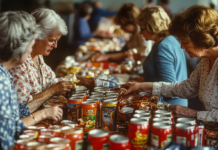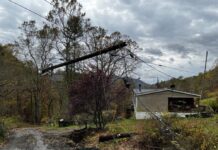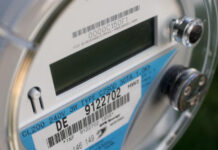It’s all over the news: supply chain problems are causing delays of car parts, appliances, Christmas presents, meat, apparel, toilet paper, and other common goods we rely in our everyday lives. The just-in-time economy, where you can run out to a big box store and buy whatever you need with no waiting, is failing us.
Getting your car repaired takes longer due to the wait for parts. Your tractor might be laid up for days because the dealer needs a component. If your refrigerator stops working, you might wait weeks to have a new one delivered. I have friends that are getting their bathroom renovated. The wait for new cabinets is 30 weeks. Last time I was in Dollar General, I heard one employee say to her boss:
“It was supposed to be here Thursday, but now they are saying Friday.”
Her manager said, “Or Saturday, or Monday, or never.” They both sort of laughed in dismay.
There are several things you can do to shorten your personal supply chain. I’m going to talk about just a few:
Be Your Own Warehouse
This fits well with being a prepper because you stock up on things you might need in the future. For example, for my Stihl chain saw, I have a spare 18-inch bar and two spare chains. I also have a 16-inch bar and three chains. (The 16-inch equipment is leftover from my old saw which finally reached the point where repairing it was impossible, but the bar will fit my current say.) I have an extra spark plug and an air filter. If I were to use the spark plug this spring, I would buy a new one, even though I didn’t need it immediately. If it was back ordered, it wouldn’t matter that much because I could go months without needing a new one. In that situation, I would probably order two, just in case.
I’ve talked before about storing gasoline, but I also have plenty of bar and chain oil and oil to add to the fuel. For my car, I have between one and two cases of oil. When I get down to just one case, I buy a second. I have at least five tubes of grease for by grease gun.
In my workshop, there are plenty of nuts, bolts, screws, nails, and even rivets. I’ve got springs, O-rings, washers, drill bits and bits for my Dremel tool. Because I believe the prepper mantra “one is none and two is one,” I try to stack it deep.
Beyond Hardware
Stocking your my stuff goes beyond hardware and includes electronics. I have an extra keyboard, several extra mice, an extra power supply and even an extra hard drive on hand, so I can make important repairs to our computers. We have so many power cords for so many phones and similar devices, I have to keep them separated in zip lock plastic bags. I have two big, black tactical watches (one recently died and is awaiting repair) and a dress watch I could wear daily if necessary.
We also stock plenty of ammo, and I have written previously about the importance of storing spare parts and accessories for your firearms. I not only have extra batteries, I have multiple flashlights and knives that are still new in their box, in case I lose one or need to outfit someone else. (I lost my favorite pocket knife several months ago, a real bummer.)
You know we have a good supply of canned food plus long-term storage food in buckets and #10 cans, but did you know that we also have extra spices, can openers, unbreakable plastic drinking cups, mess kits, and extra cast iron cookware?
Right now, we have three cases of cat food (a 72 day supply), over two months of dog food, and at least that much chicken feed. Whenever I open my last bag of feed, I go out and buy two more. If I am feeling nervous about availability or the global situation, I build up an even bigger cushion.
Think about what you have, what you can’t do without, and what you often have to run out and buy. Then fill those gaps in before you need the item.
Buy Local
If you search hard enough, you will find farmers and homesteaders who grow and raise food near you. Grass-fed beef grown on a regenerative farm and organic fruits and vegetables raised near you may be more expensive than you are used to paying at the store, but they are better for you. Most local ranchers do not use antibiotics to promote growth and do not use GMO feeds.
While people think of grass-fed beef and free-range eggs when they think of locally grown meat, more and more farms are specializing in pastured-raised pork and lamb or mutton.
Best of all, you can usually drive to the farm and pick up your food or meet them at a local farmer’s market. There are no container ships or 18-wheelers involved. If the truckers go on strike, your local food sources will be largely unaffected. And when people clamor for food, they will favor their established customers.
You may also be able to find local sources that produce fibers or even finished clothing. Don’t ignore the local thrift store or second-hand store. Like the farmers, they do not depend on ships from China or trucks from a big distribution center miles away. Many used items at thrift stores, Restore and second-hand shops are in good shape and very cost effective.
Pick Your Own
Keep an eye out for farm stands, where you can pick up fresh items on the fly, and local U-Pick operations. When in season, you can pick strawberries, blue berries, apples, and other crops. Because these items are fresh from the field, they often taste far better than commercial fruit and vegetables that were picked weeks ago and ripened while in transit. You can also pick large quantities and preserve them (see below).
Also look for wild berries, apples and other foods to harvest near you. This could be in a vacant lot, down a country road, or even in a wilderness area.
Grow Your Own
As you know, we raise chickens and bees. We also have a small vegetable garden and can grow microgreens and sprouts inside. We pick wild strawberries and blackberries on our land, blue berries on one neighbor’s property, and apples on another. The sooner you plant your orchard and your berry bushes, the sooner you will enjoy a harvest of your own.
There are other opportunities as well, including raising rabbits, which take very little space, or goats, which take more space but can give you milk. A dairy animal opens many possibilities, including making cheese, yogurt, and related dairy products.
One animal people often overlook is farming fish. If you are lucky enough to have a pond on your property, consider stocking it. Pan fish like crappies or bluegill can add some protein to your diet as well as give the kids some fun. Talk to your county agent about what fish are best for your pond size and depth.
If a pond is not an option, look into other methods, from growing catfish in a barrel (Google it if you doubt me) to a more professional aquaponics system, which will also yield greens and other vegetables. If you have no back yard but an empty basement or garage, Aquaponics may worth serious consideration, especially for someone who likes to tinker or has an engineering mindset.
Keep in mind that raising your own food gives you something valuable and replenishable for bartering.
Preserve Your Own
Whether you grow your own food, harvest it in the wild, or just buy large quantities in season when it is less expensive, consider preserving the food yourself. This can be as simple as freezing the berries you gathered or using the dehydrator to preserve apples or even bananas. Water bath canning and pressure canning are excellent ways to preserve the harvest with plenty of information available online, but you can also consider pickling and fermenting foods.
Preserving your own food ties back into our first recommendation: be your own warehouse. As we have stressed, having food stored up for the bad times is a foundation of prepping. Nothing says your stored food has to be commercially canned or freeze dried. While I don’t have and do not expect to ever own a freeze drier, a growing number of preppers do. It is a very viable way to preserve your own food for the future.
Plan Ahead
Finally, planning ahead rather than waiting for the last minute is going to be critical as supply chains stretch and break. The just-in-time system of delivery and the overnight or same-day shipping promised by many online retailers has gotten us used to instant gratification, but it is a recent phenomenon. Why worry that you are almost out of something when you can have more delivered in just a few hours? Until you can’t because it is sold out, or the manufacturer can’t get parts, or the chips used to build it are back ordered three months.
If we all had the shopping habits of our grandparents, there would probably never have been a toilet paper shortage in 2020. That kind of everyday preparedness is what we need to get back to. Supply chain problems are going to ensure it.
Our here on the mountain, we all know there will be days when we are snowed in this winter. With any luck, it will only be a few days, but it always possible that it could last weeks. We are prepared for that. You should be too, even if you don’t live on a mountain.








